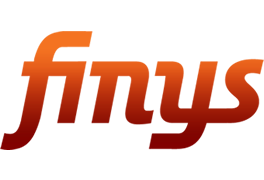Software Is a Service
No. That’s not a typo in the title. Yes. It’s a play on Software As a Service (SaaS). Yes. Our software is available in the cloud. But it’s also something we think about frequently when we’re asked, “What do you do?”
The Obvious
We provide an administration suite for property/casualty insurance. That means our suite does everything a comprehensive administration suite should do:
- It accepts applications.
- It has workflows.
- It applies business rules.
- It rates and quotes applications.
- It binds coverages and issues policies.
- It processes renewals and declinations.
- It integrates with other systems and data sources.
- It contains a forms library.
- It enables analytics and reporting.
- It feeds billing and claim modules (or systems).
- It processes the necessary transactions.
- It makes information and transactions accessible to policyholders and agents.
Along the way, the Finys Suite also lets insurers make all necessary policy changes, audit premiums, cancel and reinstate policies and endorsements, track coverage histories, and other cool stuff.
[Yawn …] Well, yes. Those things and more are what the Finys Suite does. But it’s not what we do.
The Not So Obvious
Our Software As a Service offering is actually a Software Is a Service offering. Here’s why we believe that: We develop software that provides processing and transactional services to our customers. The Finys Suite’s digitalization, centralization, automation, and configuration make it easier for our customers to do the business they need to do, the way they want to do it. It also makes it easier for people (policyholders, agents, and other parties) to do business with them.
By making it easier for people to do business with them, the services our software provides also enables our customers to provide better service to all of their constituents. Policy service, claims service, self-service, billing, a variety of payment methods — all of those things and more help our customers cultivate and retain the relationships through which their products are sold and by which their businesses are sustained.
Could Software Is a Service be considered a stretch? Sure it could. But we don’t think of it that way. We think of it as a service that makes providing service easier for our customers.

